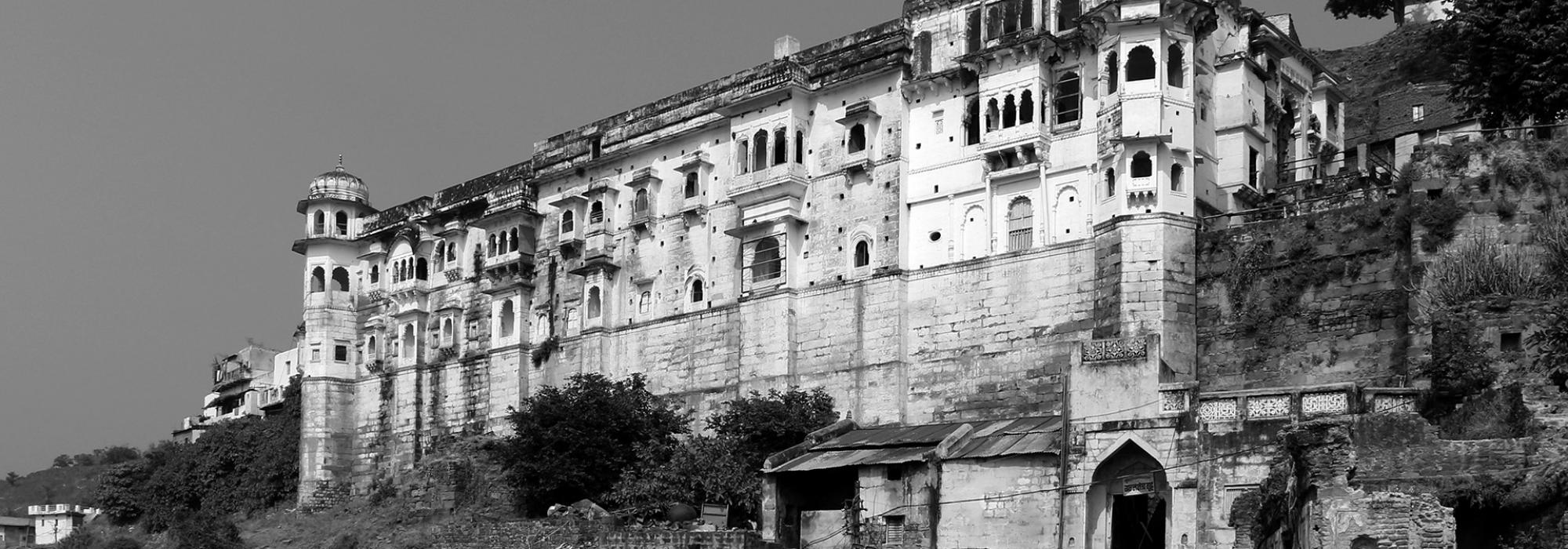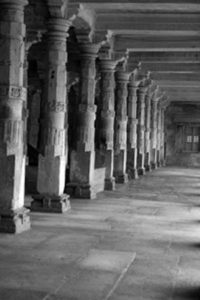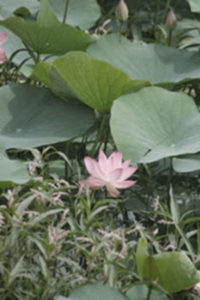Dhar
After Ujjain, the next day’s plan was Dhar, Bagh caves, and Maheshwar. We started early the next morning, had powa and jalebi and headed first to Dhar – dhara nagara. Raja Bhoja, the legendary Paramara king of the 11th century had made Dhara the capital of Malwa. Bhoja was an extraordinary genius – a great scholar, a poet, a philosopher, and a warrior all rolled in one. His extensive writings, 83 in number, cover the branches of philosophy, poetry, medicine, astronomy, ship building, civil engineering, yoga, and medical sciences. Each of his titles became a title for his books.
[contextly_sidebar id="i1io2dxLsQhuQ63kiHQBkr6UBefJZzN3"]
The Somanath temple was rebuilt by him after it was ransacked by Mahmud of Ghazni. It was perhaps only Bhoja that Ghazni feared. That we were in the same Raja Bhoja’s dhara nagara filled us with an inexplicable sense of pride and anticipation. Dhar was, however, a telling blow to our Hindu sensitivities. The Sarasvati mandira of Raja Bhoja is now a mosque. The temple has been reduced to a bare fallen quadrangle. The pilloried pillared corridors of an erstwhile grand temple stand in mute testimony to the brutal vandalism.
Not a single human figure remains, for namaz cannot be offered amidst human idols. It is considered sacrilege. Friday is reserved for namaz. Hindus are denied entry on Fridays during namaz. The very entrance to the once grand temple is blemished by an abhorring eyesore – a dargah. The instruction board outside warns the Hindus not to carry any articles of worship into the ‘temple’ except ‘two’ flowers and less than a handful of rice! Not surprising, there is no advice for non-Hindus at all. The Sarasvati idol itself is now a cherished exhibit at the British Museum.
Dhar awakened in all of us a strong sense of revolt albeit for a short while. Paramaar, our driver who was a refreshingly hardcore Hindu, lifted our spirits with some stories of Hindu valour and spirited retaliation in his hometown, a village near Indore. We were contemplating going to Mandu next. We learnt that the whole town is Islamized with forts, mosques and dargahs littered on the ruins of Hindu temples. Rather, by ruining Hindu temples. We were no longer interested in Mandu. Dhar had assaulted our sensitivities enough.
RG in the meanwhile had composed himself reading Raja Bhoja’s Champu Ramayana. He read out aloud a few especially poetic stanzas from the Kishkindha kanda.
तापोपशान्त्तिनटनात्कृतलोकहर्षा
वर्षानटीगगनरंगतलात्प्रयात
अंभोदवाद्यमचिरेण शशाम सर्वं
निर्वापिताश्च सहसैव तडित्प्रदीपाः ॥
चम्पू रामायण ४.४७
The light(n)ing had ceased. The orchestra of the thunder had ended. The cloud-curtain had been lifted. The lady (of the) monsoon thus departed.
It was a soothing relief to seething and helpless anger. The Champu Ramayana was composed in one night, even as Bhoja was fighting a war with Mahmud of Ghazni. The Yuddha kanda remained unfinished. He had declared that the Yuddha kanda would be enacted the next day. Unfortunately, he did not live to complete the Ramayana.
Bagh caves
We proceeded then to Bagh caves. The journey in the tempo traveller was pleasant and the challenges of extempore compositions to V and RG kept us also engaged and stimulated. A beautiful lotus lake on the way or a green field with a lone tree - they all became material for poetry or at least poetic thought. The lotus also revealed itself as Lotus to JM!
Throughout the trip in fact, there was not a moment of boredom in the TT. There was so much mirth and laughter. And the transformation of sakarmaka kriya padas to akarmaka kriya padas added multiple dimensions to every 'thing' we uttered. Nothing was without a pun. The ‘whole’ ‘thing’ was so punny. There was a ‘central’ meaning to every sentence. More was meant when little was said. Rather, more was said of what was not meant.
Bagh caves are rock cut cave temples of the 5th and 6th centuries. It predates Badami by about a century and a half. The details of the caves are all in our photos. I shall leave them out here. Huge more than life size sculptures of the Buddha adorn the first cave. ASI also maintains a pretty nice museum here. It houses the actual wall paintings of the caves.
After Bagh caves, we proceeded towards Maheshwar – Mahishmathi of the old. We reached there by around 7 in the evening and went to the MPTDC guest house. The forbidding costs made us look for alternative accommodation soon. We finally settled down at a simple, yet comfortable and decent accommodation, washed up and then walked to the MPTDC for dinner. That was a disaster. Even after an hour of ordering a simple soup, not even its aroma came our way. We were hungry and frustrated. We decided to walk out. Walk out we did. The only solace was we had already finished a green salad and ‘bought’ two bottles of mineral water. We walked out not paying for it registering our protest! But, a protest would not fill our stomachs. Thankfully, our afternoon lunch that day at a place (curiously) called Kukshi (means stomach in Sanskrit), was one of the better ones in the tour. We had filled ourselves to the hilt. That saved us from further irritation when dinner was delayed and denied. Perhaps, it saved the glass tables too. The denial of food had begun to bring our fists thumping down in anger. By then, JM had developed an affinity for glass anyway. The previous night at Ujjain, JM was witness to how clean a glass door can be. He walked right through it. He tried to at least, earnestly. While we were lucky that the door did not break, the mark of cleanliness bore on his forehead for many days. Well, the ice packs had cooled him a little. Else, there was little doubt that he would accomplish here what he did not the previous night. Anyway, we then had to find another dhaba a little distance away where we helped ourselves to a decent dinner. We hit the bed soon and the next day’s morning plan was to bathe in the Narmada.
Maheshwar
The next day, we were informed that the heavy rains had muddied the Narmada and bathing there would not be possible. So we finished our baths in the lodge itself, went to a nearby dhaba for the usual powa, kachori breakfast and then were escorted by Paramaar to the ‘palace’ of Ahalyabai Holkar. The simplicity of the queen and the phenomenal work that she had done especially for sanatana dharma filled us with a deep sense of admiration. RG also filled us in with some details about the queen. We bowed down to her life size painting adorning the simple throne in her ‘durbar hall’. The unassuming building which was both her living quarters and the center for administration of the entire empire provides an ironic contrast to today’s humongous acreage of buildings that even small companies haughtily flaunt.
We walked to the adjoining ghat. It reminded me of the bathing ghats of Varanasi. In fact, all the ghats of Varanasi were built by Ahalyabai. The Kashi Vishwanath temple itself was renovated by her.
The Narmada ghat at Maheshwar is strikingly beautiful.
The Narmada was flowing full and the ghat had so wonderfully homogenized itself with the waters. The ghat is huge, paved in granite and spotlessly clean. The grandeur of the ghat and the temples there stand to tell a story of a grand community life that revolved around even a bathing ghat. We can only relive in our imagination. We then decided to take a boat ride in the swollen waters of the Narmada much against the wishes and warnings of RG. We finally persuaded him to go with us.
The small motor boat cut against the flow of the river causing the boat to swing wildly to the waves of the red furious waters. Some of us enjoyed. Some of us pretended to enjoy. Some of us held on to dear life. The morning sun that glistened gloriously on the water was hardly noticed. The seemingly benign glisten of the sun rays on the water was but a façade to a red and furious face. The boat that was trying hard to force its way upstream slowly changed course and began to abide by the flow of the river. The boat stabilized. So did our breaths. It was then an enjoyable 20 minutes in the river as we went up to a small temple right in the middle of the river and then turned back towards the ghat. By now the fear had subsided. Fear was giving way to poetry.
Maheshwar is incidentally famous for sarees. About 40% of the town’s population is in the business of weaving. We would do little justice if we (some of us at least) did not buy and take a few sarees home. So we shopped. Almost all of us bought a saree or two.
Maheshwar is the place where the duel occurred between Mandana Mishra and Shankara. In fact, before we saw the ghat and Ahalyabai’s palace, what had brought us to this place was this fact alone. We should not forget to mention here that it was Dr. SLB’s recommendation that we visit Maheshwar. How valuable this suggestion was! RG also recollected that it was the same place where Karthaviryarjuna ruled. Incidentally, he is a Vedic figure, making Mahishmathi an important place since the age of the Vedas. It was time to leave Maheshwar. It was captured in our memories and in the camera.
Omkareshwar
Our next destination was Omkareshwar. As usual we stopped by at a roadside vendor and had our regular breakfast of powa, samosa, and kachori. By afternoon we had reached Omkareshwara. On either side of the Narmada are two Shiva lingas – one a jyothirlinga and another a svayambhu linga. What is known as ‘Maamaleshwara’ is apparently the jyothirlinga. And consistent with many other jyothirlingas in Maharashtra and MP, this too was buried and seemed to be hidden below the ground.
We took a boat ride across to the other side and visited the cave of Govinda Bhagavadpada. Yes, the same Chandra Sharma whose story RG had narrated at Ujjain. The boatman also took us a little upstream and showed us a ‘triveni’ sangama. One of the streams is curiously called Kaveri. Anyway, the triveni itself was imaginary. Narmada here was a pale shadow of what we had seen of her at Maheshwar. She was greatly subdued.
[contextly_sidebar id="rUqa5yQ7pGeYUMsyk75DrGjonA3Zpfwq"]
















































